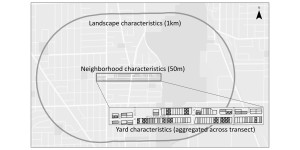Spatial Analysis on the Concentrations of Air Pollutants in Basra Province (Southern Iraq)
The study takes place in the Basra province, located in Southern Iraq. This area is rich in oil and therefore contains many industrial and anthropogenic activities related to it such as petrochemical plants, refineries, power stations, and more. This activity has led to alarming pollution levels that has led to multiple research conducted to analyze the effect of the pollutants on human health. The objectives of this study are to spatially analyze the geographic distribution of pollutants, project the pollution levels on a map to determine its spatial variation, and to recognize the area with higher pollutant concentrations within Basra province.
Seventeen sampling stations were chosen taking into consideration human activity and variety of local environments. Sampling occurred on the same at day and time at every station with a portable detection instrument. At these stations CO, CO2, NOx, SOx, H2S, HCs, CH4, HCHO, and O3 were measured.
With the air pollution concentrations collected at each site, each pollutant was analyzed separately to see is spatial variation and geographical distribution ( Figure 4.)
The maps showed that the pollutants were spatially varied over all, showing a random pattern. However, a pattern could be identified using the indexes of each station. The index is the sum of every pollutant concentration at the site and then divided by the number of pollutants. A map was made to analyze this pattern ( Figure 5. ) and it shows that the pollution levels are higher on the western region. The highest values of pollution concentration were in Burchesya and Sebba where there has been constant oil exploitation.
The authors noted that the stop emissions in these areas is urgent. They also recommended to install fixed monitoring stations and further research.
Citation:
Al-Hassen, S. I., Sultan, A. A., Ateek, A. A., & Al-Saad, H. T. (2015). Spatial Analysis on the Concentrations of Air Pollutants in Basra Province (Southern Iraq). Open Journal of Air Pollution, 2015,4, 139-148. http://dx.doi.org/10.4236/ojap.2015.43013











